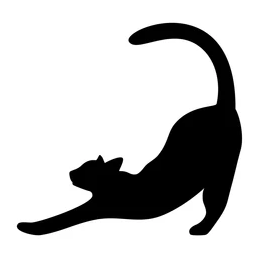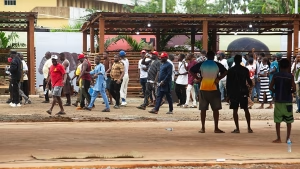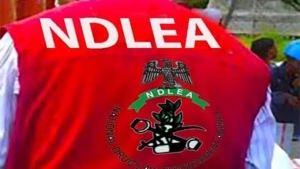Central Africa: Great Lakes Region’s Mineral Certification Faces Scrutiny 14 Years On

Analysis — Fourteen years since 12 governments in the Great Lakes region unanimously agreed to create a foolproof international system for certifying and auditing minerals that have been blamed for fomenting conflict in the region, experts say little has been achieved so far.
“The regional mechanism launched more than ten years ago does not seem to have worked well; the harmonisation of political and regulatory frameworks is not yet effective,” said Dr. Prudence Bararunyeretse, a professor at the University of Burundi, who specializes in monitoring due diligence in the mineral supply chain in the Great Lakes region.
He spoke in a virtual meeting on April 9 organised by the International Conference on the Great Lakes Region (ICGLR). The ICGLR is a 12-member intergovernmental organization established in 2006 to promote peace, security, democratic governance, economic development, and regional integration. Its members include; Angola, Burundi, Central African Republic, Congo-Brazzaville, DR Congo, Kenya, Rwanda, South Sudan, Sudan, Tanzania, Uganda and Zambia.
The webinar titled, “ICGLR’s Fight Against Illegal Exploitation of Natural Resources in the Great Lakes Region” attracted independent experts and researchers, senior government officials, players in the private sector from the region as well as development partners.
Prof. Bararunyeretse said the disparities observed in different countries, especially in terms of fiscal regimes and mining revenues have a negative impact on the “securitisation of the supply chain and are among the causes of speculation and illicit mineral trafficking, especially tin, tungsten, tantalum and gold.”
“It is not uncommon to hear that the countries of the ICGLR are ‘acquiring other neighbouring countries’ and (using) members of the same community, to promote illicit mining and extraction of resources in their territories,” he said. “This suggests that the cooperation and communication between the states themselves and between the states and the final actors of the supply chain is not in a good place.”
“Our countries are rich in natural resources but at the same time, the countries of the Great Lakes display very poor performance in terms of different (development) indicators, such as the index of sustainable human development, the index of perception of corruption, the index of fragility and the index of security.”
He added: “The countries do not fair any better in terms of attracting foreign direct investment, the mining transformation and the rate of electrification and road infrastructure that are essential for the development of the mining sector.”
“This is a situation that does not rate development based on the exploitation of these natural resources. So we all realise that this wealth is also associated with the permanent insecurity that we continue to observe in the region, which creates a paradox between wealth, natural resources, the well-being of the population, economic growth and sustainable development.”
Great Lakes region, a paradox of plenty
The ICGLR member states are part of the Great Lakes region, a region that is often cited as an example of the so-called “paradox of plenty.” The region has a substantial quantity of natural resources coveted on the world market such as lithium, cobalt and the 3TG (tin, tungsten, tantalum and gold).
But for many of the countries in this region, there is little to show for the mineral abundance. Some experts blame the high rate of informality in the region’s mining sector with some reports noting that over 90% of the five million people directly involved in the ICGLR’s mining sector are artisanal and small-scale operators. It is also estimated that close to 30 million people out of about 390 million in the ICGLR member countries somehow depend on mining.
Yet, the minerals from this expansive region have long suffered from the distrust of companies and traders listed on international stock exchanges who have silently suspended supplies to avoid being indexed. Quite often, the supply chains of these minerals has been found to be complex and opaque, with experts blaming the perennial instability and cyclical violence on these precious metals.
In response to this persistent challenge of socio-economic inequality and the trade in conflict minerals, the ICGLR developed an international mechanism to stop the exploitation of natural resources known as the Regional Initiative against the Illegal Exploitation of Natural Resources (RINR).
The RINR consists of six tools namely, the regional certification mechanism, harmonization of national legislations, regional databases on mineral flows, formalization of artisanal mining sector, adoption of the Extractive Industries Transparency Initiative (EITI) and whistle-blowing mechanism.
At the core of the initiative is the ICGLR ‘Regional Certification Mechanism’ which focuses on four minerals namely, tin, tantalum, tungsten and gold referred to as “Designated Minerals” under the the ICGLR mineral certification scheme.
The mechanism is aimed at ensuring that mineral supply chains do not provide direct or indirect support to non-state armed groups or security forces engaged in illegal activities and/or serious human rights abuses within and between ICGLR member states to eliminate support for armed groups that perpetuate or prolong conflicts and/or commit serious human rights abuses. So far, five of the 12 member states; Burundi, Uganda, Tanzania, Rwanda and DR Congo are already implementing the ICGLR regional certification mechanism.
Combating illegal mineral deals
Gerard Nayuburundi, the Regional Coordinator of the Natural Resources Unit at ICGLR which is based in Bujumbura, Burundi, told the virtual meeting on April 9 that since the “Regional Certification Mechanism” went into force, all minerals crossing border points should be accompanied by an ICGLR certificate.
“Otherwise, whatever is crossing member state borders are smuggled materials and they should be treated as such,” he said. Nayuburundi said the four minerals; tin, tungsten, tantalum and gold have been given special attention because they have been difficult for the region to certify, especially gold consignments that come from artisanal and small-scale miners-thanks to its high value-to-volume ratio.
Philip Kirui, the Deputy Director of Mines and Head of the Licensing Function at the Directorate of Mines in Kenya’s State Department of Mining, who also doubles as the Chair of the ICGLR Audit Committee, said the ICGLR Audit Committee was established as a technical oversight body to ensure transparency, consistency and compliance within the ICGLR framework. He said in order to do the actual auditing on the ground of the mine site and the export process of these minerals, third party auditors are deployed.
He said the accreditation of these auditors is done by the audit committee through a procedure that is already developed as one of the tools in the manual. “We have auditors from across the globe and from the region who have expressed interest and they have been accredited to be able to carry out this auditing exercise,” he said.
The work of the committee is also to monitor the performance of those auditors, assign them the audit exercise, look at their work, review their reports and to ensure that they meet the required standard. Kirui said the committee is contributing to the implementation of this regional certification mechanism to give it the credibility and to make sure it meets the regional and international standard.
“Different member states have different capacities. As we’ve seen, out of 12 countries, there are only five countries, which have already implemented this mechanism. And the ICGLR, the Secretariat, and the various peer groups are working to ensure that all the member states eventually join and implement the regional certification mechanism,” Kirui said.
He added that the committee also ensures that the whole process of the regional certification mechanism and the exports of the critical minerals meet certain standards acceptable at the international level and that there is transparency in the mining activity in the region contributing to the economic development within the region.
However, the actual implementation of the regional certification mechanism is done at the member state level, meaning a huge responsibility falls among the member states to ensure that this tool is implemented.
“In general, the audit is on and it’s working and for the companies which have been certified, they can demonstrate that they are getting their commodities in a legal mine and they can show how the chain of custody of those minerals is carried out,” Kirui said.
Limited range of minerals
But Prof. Bararunyeretse says the fact that the ICGLR initiative does not take into account a wide range of mineral resources that occur in the Great Lakes, and chooses to narrow the resources to just the 3Ts and gold continues to be a source of problems in the the region.
“The mechanism or initiative of the ICGLR does not clearly provide strategies and measures of correction or sanction in the context of our shared strategies. Local communities in mining areas often find themselves in a position of ignorance when it comes to the management of mining,” he said.
“This lack of education does not favour the fight against illegal exploitation of natural resources. In these conditions, we can only ask the different actors of the supply chain, such as mineral suppliers and consumers, to double their efforts to fight against illegal exploitation of natural resources.
“This would allow the success of peace and security initiatives that are essential for political and legal stability, the reduction of mining costs, and the facilitation of access to investments, the stimulation of the local economy, economic growth and the development of national communities in our region,” Prof. Bararunyeretse added.
Uganda intent on compliance
Uganda became fully compliant with the RINR in November 2023 after the passing of the ICGLR RINR regulations. This was 10 years after DR Congo and Rwanda, which became fully compliant in 2013, three years after the Lusaka ICGLR heads of state declaration of the RINR in 2010.
Since RINR was launched in 2009, Uganda has made significant progress in the implementation of six tools that outline actions needed to break the link between mineral revenues and rebel financing in the region.
In September 2015, Uganda approved the domestication of the provisions of the ICGLR Pact and associated protocols. Parliament passed the ICGLR (Implementation of the Pact on Security, Stability and Development in the Great Lakes Region) Act, Cap 188 to give the ICGLR legal force and allow Uganda to participate more effectively in regional efforts to achieve the ICGLR objectives.
Grace Nassuna, the Assistant Commissioner for Geoscience in Uganda’s Ministry of Energy and Mineral Development who is also, an ICGLR Regional Committee member told the webinar that Uganda has over the last seven years moved quickly to become compliant with the ICGLR’s regional certification mechanism.
Uganda has, for instance, enacted the ICGLR Act, 2018; put in place the ICGLR Regulations, 2023, and come up with the certification guide for 3TG miners, 2023. Uganda has also put in place guidelines for the implementation of the “Chain of Custody’ systems in Uganda, 2023” as well as guidelines for third-party audits of exporters.
Uganda has further developed a mine site inspection checklist and has already inspected 10 out of the 51 3TG mine sites using this checklist. The country has gone ahead to develop a BRASM system to register artisanal miners. Already, close to 6000 artisanal and small-scale miners have been registered at 21 gold mining sites countrywide.
As such, Nassuna said, Uganda has since managed to control illegal mining through encouraging the formalization of Artisanal and Small-scale mining, which has led to economic growth especially in the artisanal gold sector, fostering stability by controlling gold rushes and reducing conflict across borders. She said Uganda has also established a regional certification unit.
“We now have a unit, and this was developed in 2019 with 10 staff; we have mainstreamed the unit into the Ministry of Energy,” she said. “We have spoken to the Ministry of Public Service to mainstream it, to make it permanent and pensionable, and we have also requested 18 more positions. These positions and the structure have been approved and the next step will be recruitment.”
Great Lakes youth are equally concerned
At the same virtual forum, Jacob Eyeru, the Chairperson of the Uganda National Youth Council and Representative at the ICGLR Youth Forum noted that the ICGLR initiative to stop or fight the illegal exploitation of minerals is about the future of the the Great Lakes region’s youthful population.
Eyeru told the virtual seminar that the fight against illegal exploitation of minerals in the region is important for young people because the value of well-exploited and legally exploited minerals is always higher than the value of illegally exploited and traded minerals.
He said mining in a controlled environment will also provide professional job opportunities and professional development opportunities for young people. “Professionalising the mining sector in the Great Lakes region would have a ripple effect, starting from the mines, going all the way to the services and value-addition sector, up to the export or the marketing of those minerals,” Eyeru said.
“So, young people will not only be able to benefit along the value chain but also be active participants in a sector that they see as a viable industry.
He said many of the young people who have been driven to the natural resources of the Great Lakes are in the informal areas of exploitation. “The reason why we’re not having highly skilled young people in the mining sector is because they do not see how they can get into that mining sector. When we talk about mining in the Great Lakes, many of the people in Zambia think about the Copper Belt, and that’s because of peace there,” he said.
“But for DRC where there is no peace, people are talking more about the war there, and the minerals being linked to the war as opposed to the opportunities that are provided by the minerals. That’s the biggest issue.”
By Independent (Kampala).



